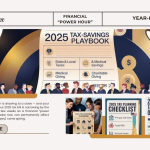The Art of Balancing Your Mutual Fund Portfolio: Quality Over Quantity
In the world of mutual fund investments, a common misconception prevails: the more funds in your portfolio, the better. This article aims to debunk this myth and provide insights into creating an effective mutual fund portfolio that aligns with your financial goals and risk tolerance.
Mutual Fund: The Diversification Dilemma

Also Read – Index Funds: Should You Buy Now, in an Overvalued Market in India?
Many financial advisors advocate for extensive diversification, suggesting that a larger number of funds can mitigate risk. The logic seems sound at first glance – if one fund underperforms, others might compensate. However, this approach can lead to unexpected consequences:
- Diluted Returns: While diversification can reduce risk, it can also dilute potential returns. If you have an equal mix of high-performing (18% return) and average-performing (12% return) funds, your overall portfolio return averages 15%. Example: Imagine you invest ₹100,000 each in 5 high-performing funds (18% return) and 5 average-performing funds (12% return):
- High-performing funds: ₹500,000 grows to ₹590,000
- Average-performing funds: ₹500,000 grows to ₹560,000
- Total: ₹1,000,000 grows to ₹1,150,000 (15% overall return)
- Unintentional Index Replication: Owning too many funds can inadvertently lead to owning a significant portion of the entire market. With 10 or more schemes, each containing 30-50 stocks, your portfolio might end up mirroring the market index, defeating the purpose of active fund management. Example: If you own 10 diversified equity funds, each holding about 40 stocks, you could end up indirectly investing in 400 stocks. This might cover most of the significant companies in the market, essentially replicating an index fund but with higher fees.
- Complexity and Monitoring Challenges: A portfolio with numerous schemes becomes difficult to monitor and manage effectively, potentially leading to investor fatigue and suboptimal decision-making. Example: Managing 20 different schemes means tracking 20 different NAVs, expense ratios, fund manager changes, and rebalancing needs. This can be overwhelming and time-consuming for most individual investors.
Mutual Fund: The Case for Focused Investing

Instead of aiming for maximum diversification, consider a more focused approach:
- Quality Over Quantity: Select a few high-quality schemes rather than numerous average ones. This allows you to concentrate on funds with the potential to outperform the market. Example: Instead of investing in 10 funds with average returns of 12%, you might choose 3 top-performing funds that consistently deliver 15-18% returns.
- Align with Your Risk Profile: Tailor your portfolio to your risk tolerance and investment goals. Here’s a simple guide:
- Aggressive Investors: Consider one multi-cap fund and one mid-cap fund. Example: 50% in Axis Multicap Fund and 50% in Kotak Emerging Equity Fund
- Moderate Investors: Two multi-cap schemes can provide balanced exposure. Example: 50% in ICICI Prudential Multicap Fund and 50% in Parag Parikh Flexi Cap Fund
- Conservative Investors: A combination of one large-cap and one multi-cap scheme might be suitable. Example: 60% in HDFC Top 100 Fund (Large Cap) and 40% in Mirae Asset Great Consumer Fund (Multi Cap)
- Avoid Chasing Past Performance: Don’t be swayed by last year’s top performers or new fund offers (NFOs). Historical performance doesn’t guarantee future results. Example: A small-cap fund that returned 40% last year might seem attractive, but it could underperform or even lose value in the following year due to market volatility.
How to Rich People Avoid Paying Tax: Discover 15 Tax Optimization Strategies
Mutual Fund: Benefits of a Streamlined Portfolio

- Easier Management: A portfolio with 2-3 well-chosen schemes is simpler to monitor and adjust as needed. Example: With just 3 funds, you can easily review performance quarterly and rebalance annually. This might take just a few hours per year, compared to potentially days of analysis for a 20-fund portfolio.
- Potential for Outperformance: In growing economies like India, a focused portfolio of actively managed funds has the potential to outperform the broader market. Example: While the Nifty 50 might deliver a 12% annual return, a well-chosen multi-cap fund could potentially deliver 15-16% over the long term.
- Reduced Fees: Fewer funds often mean lower overall expense ratios, potentially increasing your net returns. Example: If the average expense ratio is 1.5%, having 10 funds could cost you 15% in fees annually. With 3 funds, you might pay only 4.5% in fees, potentially saving 10.5% of your returns.
Conclusion
The key to successful mutual fund investing lies not in the quantity of schemes but in the quality of your selections. By focusing on a few well-chosen funds that align with your investment goals and risk tolerance, you can create a portfolio that’s both manageable and potentially more rewarding. Remember, the primary purpose of mutual funds is to simplify your financial life, not complicate it with an excessive number of schemes.
As you build or reassess your mutual fund portfolio, prioritize understanding your risk profile, researching fund performance consistently (not just based on recent returns), and staying informed about market trends. With this approach, you can work towards achieving your financial goals while maintaining your mind.
Thank you for reading this post, don't forget to subscribe!






